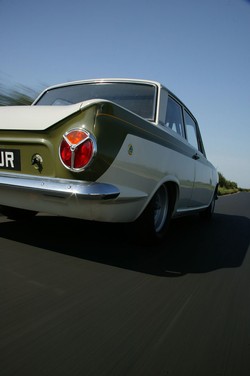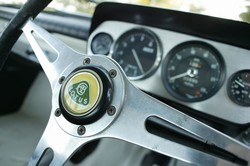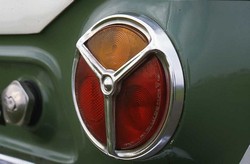PH Heroes: Lotus Cortina
Before the GT40s, RSs and Cosworths there was only one fast Ford - the Lotus Cortina. Richard Heseltine finds out what makes it so special...
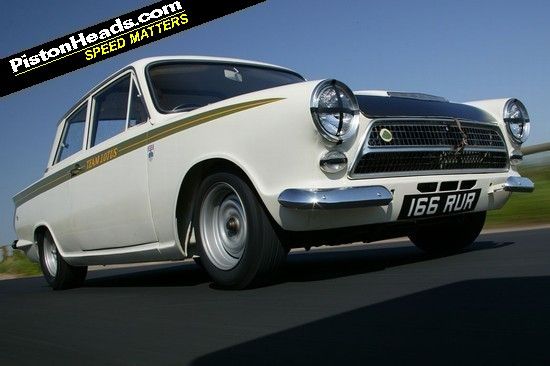
Think of the Lotus Cortina as one of the world’s first homologation specials, a car in which motorsport really did improve the breed. Here was the modish must-have of the mid-sixties, an all-rounder as at home radiating status in urban cityscapes as three-wheeling its way to glory trackside.
In volume terms, it never was a big numbers success – just 2894 were made from 1963-66 – but that is to miss the point of the exercise: the Lotus Cortina gave Ford an image overhaul. It made the Blue Oval hip.
Think back to a time before the GT40 vanquished Ferrari at Le Mans, before the pop-pop-pop cacophony of a BDA-powered Escort resonated around a forest stage. Ford meant honest, proletariat and maddeningly formulaic products aimed at everyman. Motor racing wasn’t in its lexicon.
Then along came the 1960s and the desire for a more aspirational profile. Ford was going racing, the suits in Detroit initiating the Total Performance programme. Thing is, in Blighty it had its work cut out. The Cortina GT proved a fleeting success but something more focussed was needed, the sort of machine that a perennially cash-strapped car manufacturer run by an engineering futurist could rustle up in a hurry: enter the ‘Type 28’.
The brainchild of Ford new boy Walter Hayes, original plans called for 1,000 Lotus Cortinas to be homologated as Group 2 Production Touring cars. Lotus boss Colin Chapman had long been keen to produce an in-house engine and, with a timely injection of funds behind him, ‘Chunky’ turned to Autocar’s technical editor Harry Mundy to conceive a twin-cam head for the five-bearing Ford ‘Kent’ bottom end.
The resultant 1498cc four-banger made its debut in the back of a Lotus 23 sports-racer for the June ’62 Nurburgring 1000km. Driver Jim Clark led by over two minutes at one point, before crashing out after being overcome by exhaust fumes. If nothing else, Lotus had served notice of intent.
After substantial revisions by Cosworth’s Keith Duckworth, capacity being upped to 1558cc, this soon-to-be-a-classic ‘twink’ was inserted into the Cortina hull, along with heavily reworked suspension and light alloy skins for the doors, bonnet and boot lid. Production of the Lotus Cortina – or Cortina-Lotus as Ford’s marketing spods referred to it – commenced in February ’63 with a list price of £910, but it would be September of that year before the model was eligible to race.
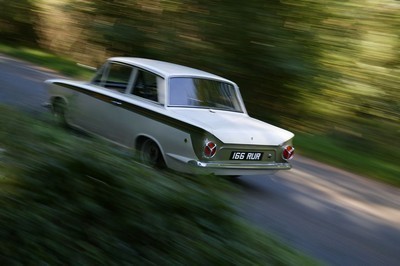
And, having been tested at assorted circuits, not forgetting the M1, its competition debut left an indelible impression. Debuting in the British Saloon Car Championship at Oulton Park on September 20 of that year, ‘Gentleman’ Jack Sears trailed home two lumbering Ford Galaxies to record a class win in his works entry. The die was cast.
A few teething problems aside, 1964 would prove a walkover for the factory-run cars. And it would be the incomparable Jim Clark – then with just the one F1 world championship to his name - who would end the year as winner of the BSCC drivers’ title. A year on, Sir John Whitmore went one better, being crowned European Saloon Car Champion for his efforts in his Alan Mann Racing-run entry.
1965 also witnessed the Group 2 car being homologated to run with leaf-spring rear suspension in place of the previous A-frame, with Clark and Sears pedalling the Team Lotus cars in the BSCC (the latter winning his class). For 1966, the final year as a front-line weapon, Team Lotus ran fuel-injected cars in the Group 5 category, winning the entrants’ award in the BSCC. Just to prove the car’s versatility, Bengt Soderstrom and Gunnar Palm claimed overall honours – by 13 minutes - on that year’s RAC Rally.
Away from the circuits and forest stages, road car production ticked over with the ally panels being discontinued as standard equipment in July 1964 (but remaining on the options list), a lightly facelifted model appearing the following October. For 1965, gear ratios from the Cortina 2000E were substituted. Production ended in September 1966, coinciding with the closure of Lotus’ Cheshunt factory. Of course that wasn’t altogether the end of the story.
For 1967, the altogether boxier Mk2 version arrived but it was assembled by Ford using parts supplied by Lotus, hence there was no Lotus type number. Somehow, it just didn’t press the same buttons, Ford even denoting it as a mere Twin-Cam Cortina. It’s the MK1 edition that nowadays garners reverence.
And just standing next to one today I can say this is deservedly so. Climb inside and the first thing that strikes you is that this is a car from an age before chunky pillars rendered interiors claustrophobic. As I sit inside this immaculate example it is an instant reminder of how airy cabins once were. It’s comfortable, too, the driving position not being dictated by offset pedals or comedy perches. And the extensive use of PVC is groovy, too. All the gauges are easy to read, minor controls less than a reach away while the downswept bonnet ahead is an appealing view. It all feels incredibly straightforward, the perfect antidote to today’s over-complicated driving experiences.
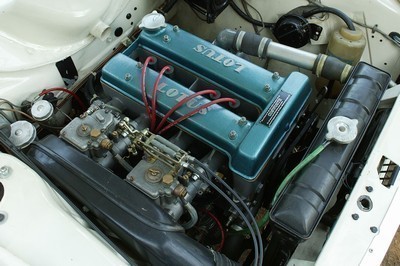
When idling, the Cortina is far from quiet. A lesson in informed simplicity, the twin-cam head is made of alloy, chain-driven camshafts operating the valves through inverted piston-type tappets. This highly tunable unit (105bhp as standard) will spin happily though the rev range – red line is 6500rpm - but has more low end torque than your typical peaky Latin twin-cams of the day: it’s hard not to smile as the twin Weber 40s pop and gurgle. And the gearchange is sweet, being relatively easy to guide between planes (although reverse is a bugger…).
Driven enthusiastically over challenging back roads, there’s much to love although, as is to be expected, ride comfort isn’t brilliant: you do feel the bumps, but there’s little kickback through the steering. Set it up for a corner and the Cortina will squat a little at the rear before balancing itself out on the exit. And the servo-assisted brakes are reassuringly progressive.
Of course this is all very old-tech, and any entry-level hot hatch will run rings around a Lotus Cortina in just about any given circumstance. Thing is, steering one of these tin top trailblazers makes you laugh, rewards your efforts. You don’t leave it feeling indifferent. The Cortina is alive in your hands and you very much feel part of the experience. But it doesn’t end there. It’s tractable, undramatic when you want it to be and flexible enough to use in real world conditions – all this in contrast to its racing pedigree. But then we were already sold just on the Jim Clark connection.
Gassing Station | General Gassing | Top of Page | What's New | My Stuff

